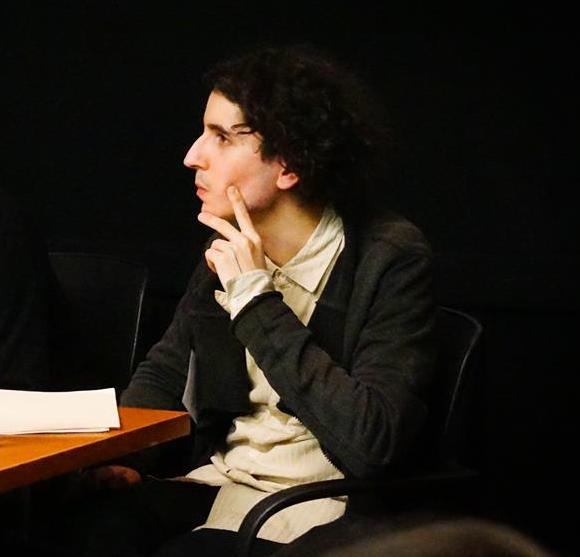Member of our Editorial Board and frequent contributor
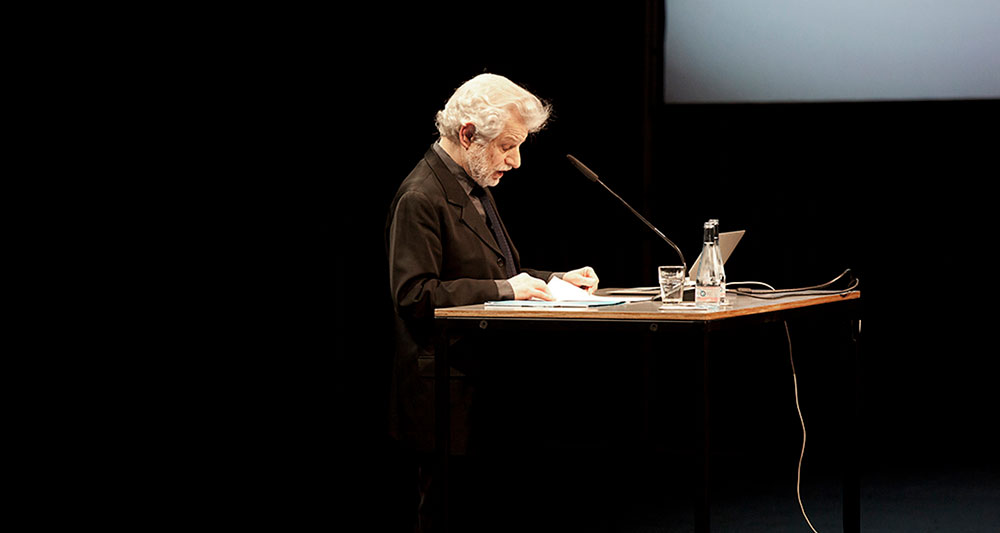
By Ekin Erkan
When Thomas Elsaesser passed away, I was working on a book review of his most recent work, European Cinema and Continental Philosophy: Film As Thought Experiment (London and New York: Bloomsbury, 2019) for the journal Alphaville. I had just completed the final proofs and was looking forward to sharing the review with him, as I had found the comprehensive nature of this work deeply impressive and accordingly wove this into my laudatory review. I knew that Elsaesser was also working on a book regarding the mind-game film, the topic regarding which he had been teaching classes at Columbia University’s film studies program for the last few years. I had taken this class with Elsaesser and found the detailed nature with which he parsed digital cinema/”post-cinema” literature and the complex networked narratives most impressive. In addition to being a rigorous instructor, Elsaesser was also a most warm mentor and friend—at the cinema studies colloquiums which I helped organize, his presence and feedback with visiting speakers stoked vigorous conversation, continually prodding philosophically dense exchanges that ranged from the nature of realism in the Berliner Schule to the influence of post-Deleuzean French philosophy in contemporary European cinema. After I left Columbia University, Elsaesser and I had kept in touch via email—I had parted from cinema studies proper and was studying philosophy, with an interest in the “other” half of the debate: cognitivism. Despite Elsaesser often finding himself imbricated in intellectual disputes with Bordwell and Thompson on the nature of digital cinema and complex narratives, as the duo were not terribly convinced in regards to the “post-classical” narrative break (arguing, instead, for “intensified continuity”), Elsaesser encouraged my plans to study beside Noël Carroll, as he knew that I had a penchant for philosophy of mind and analytic epistemology. Elsaesser, unlike many European film theorists, did not have an allergy towards analytic philosophy and, like myself, was welcoming of what is often termed “synthetic philosophy,” i.e., the bricolage of analytic and continental thought. Such mentorship was, and continues to be, rather rare—many mentors prefer that their students stick to a particular tradition rather than experiment so—and something I cherished.
Hearing the news was, naturally, devastating. Elsaesser left a mark on all whom he mentored and his colleagues as well—just last week, during a conversation between myself and Carroll, Noël remarked on how Elsaesser’s penetrating erudition continues to be missed. Of course, I agree. At the time of Elsaesser’s passing, I offered my condolences to Elsasser’s late wife Silvia Vega-Llona, who, a brilliant cinema scholar herself, noted her plans to keep up Elsaesser’s impressive archive, which is hosted on his [now-defunct] website. I also recounted one of my warmest memories: when I introduced Elsaesser and the documentarian Amos Gitai. Although I did not know Gitai terribly well, I had had a number of exchanges with him at Columbia, as he was a visiting instructor; Gitai, one of my favorite documentarians and fiction filmmakers, had always been the source of thought-provoking critique, in both his cinema and writing. Notably, however, Elsaesser and Gitai had an unsuspected connection: Bauhaus architecture. As some may know from Elsaesser’s self-directed and self-edited documentary, Die Sonneninsel (2017), Elsaesser’s grandfather, Martin Elsaesser, was an architect and a pioneer of the “New Objectivity” movement, which he, alongside Ernst May taught at the Bauhaus School and was implemented in various Frankfurt districts between 1925 and 1930—this prompted an architectural turn into what would be termed “New Frankfurt.” Munio Weinraub, Gitai’s father and a leftist activist, had also studied at the Bahaus in 1930, where he honed his architectural prowess. After introducing the pair, I stepped aside as Thomas and Gitai exchanged stories regarding Weimar Germany and listened, captivated in wonder and somewhat pleased with myself for this spontaneous meeting having gone so well.
Prior to his passing, Elsaesser’s hope was to offer a politically steeped examination of the mind-game film and the psychology of the networked image. Since the mid-1990s, independent cinema, Hollywood, but also films from other parts of the world (notably Asia and Latin America) have shown a remarkable predilection for narratives that are a-chronological, multi-directional, multi-character, and—some argue—in significant ways deviate from “classical” story constructions. There is much contention regarding the status of this rupture, sometimes deemed “post-classical” by those who advocate that these complex narratives presents us with a genuinely novel mode of storytelling while others maintain that these “neoteric” narrative structures have, in fact, been with us for far longer than digital filmmaking.[1] What is agreed upon, however, is that these films display attenuated or differently articulated forms of causality and feature ambiguous or aberrant character motivation with non-linear and reversible temporalities; these films often contain surprising twists and cognitive dissonances, sometimes even ontological switches. Some of these stories, perhaps most famously Christopher Nolan’s Memento (2001), focus on unreliable amnesiac narrators or protagonists who may have mental conditions, extreme affective states, or physical disabilities, obliging the viewer to see and conceptualize the film’s “world” from a different perspective than they may be accustomed to. Other films within this mode—“ensemble films”—feature a large cast of characters interacting or intersecting with each other, whether in a single film or in longer-running high-production value television series. These global genres or sub-genres have been variously labeled, including: “multi-character narratives,” “modular narratives;”[2] “forking path films,” “transmedia narratives,”[3] “hyperlink movies,” “mind-tricking narratives,”[4] “network narratives,”[5] “fractal films,”[6] “puzzle films,”[7] “mind-game films,”[8] “mind-fuck movies.”[9] There is an expansive and ever-burgeoning literature dealing with these subgenres, devices, and tendencies featuring authors such as Edward Branigan, Warren Buckland, Michael J. Anderson, Nina Littschwager, Wendy Everett, David Bordwell, Kristin Thompson, and William Brown (amongst others). Elsaesser, however, offered the most comprehensive and historically expansive study of the mind-game film in particular. Inspired by Elsaesser, I, as I am sure many of his past students, hope to carry our his line of research (personally, my interests are tethered to Huge Münsterberg, likely the first thinker to proffer the mind/film analogy, a thinker that Elsaesser saw himself as in dialogue with).
Uniquely, Elsaesser’s critical work in the mind-game film found appendages with scholarship that moved beyond these films’ arratives, engaging with digital cinema’s production, viewership, editing, and distribution. In likening digital film-making and film-viewership with the putatively “networked” nature of the brain, as Elsaesser was writ to note in his “the film is the brain” apothegm (pace Deleuze), we see a novel characteristic tacked on to the previous renditions of the mind/film analogy found in Münsterberg, Susanne Langer, Francis Sparshott, and the psychoanalytic film theory of Metz and Baudry. That is, Elsaesser considered narrative and the conditions of film-production by synthesizing the transcendental register, phenomenological register, and behavioral register of theorists past, producing what might be understood as a critical filmic uptake via networked infrastructure. Elsaesser closely considered how these mind-game films often feature multi-platform complex storytelling and paratextual narrative feedback loops brimming with auto-reflexivity, self-reference, nonlinear storytelling, and unreliable character perspectives. Yet this did not occlude him from nearby political consideration, as he was deeply interested in transnational collaborations, mobile device viewership, and motion capture technologies. These considerations all come to bear in his latest book on European cinema, yet Elsaesser, as a media archeologist proper, recognized the genealogical thrust of popular Hollywood cinema and pop cultural artefacts tout court.
Indeed, we would be wise to keep Elsaesser’s recent inquiries at hand: these complex narrative films are ineliminably tethered to the technological and economic practices ushered by the regional restructurings and consequent globalization of neoliberalism—the growing integration of activity across national borders not only draws forward an array of polities, cultures, and economies into a global whole but has deep and significant effects on film production, distribution and, in turn, viewership. Pace globalization, local diversity is eroded and replaced by a global polity, culture, and economy. This had been the object of Elsaesser’s late research, and (post-)cinema scholarship ought to keep in mind the global production/post-production techniques and socio-political nodes characterizing the post-Fordist workflow inherent to transnational collaborations and media production pipelines: consider, for instance, the highly connected and interdependent Hollywood and Hong Kong film industries or the blocked funds from the US that support India’s national cinema. Notably, post-Fordist workflow, unlike the preceding model, is geographically dispersed and diffracted, resulting in a model of flexible accumulation that often features live-action performances mixed with CGI. Major international film industries like Hollywood, Hong Kong, and Bollywood are increasingly establishing the standards for cinema production where film studios, visual effects companies, and animation houses are disjunct, resulting in transnational collaborations that are enabled by digital platforms and tools such as video conferencing and online file sharing. One only need consider major motion pictures such as Jia Zhangke’s The World (2004), James Cameron’s Avatar (2009), Bong Joon-ho’s The Host (2006), Gareth Edwards’ Godzilla (2014), and Don Hall and Chris Williams’ Big Hero 6 (2014) for examples.
In regards to viewing modes, these complex film narratives seem to draw on, often in self-aware and self-referencing fashion, the changing techno-economic conditions of our day. This is precisely why Thomas Elsaesser characterizes these films as “playing games” with the viewer.[10] In addition to the self-contained games and genre-limited tropes, these films have been characterized as challenging viewers with epistemological problems (i.e., how do we know what we know) and ontological doubts (about other worlds and/or other minds). Drawing on the aforementioned linkages to globalization, Elsaesser remarked that there exists a “double perspective” that envelops the mind-game film’s sociopolitical themes: “while the story is clearly about certain aspects of transnational capitalism from an American point of view, the film knows that it is itself also very much part of this globalization, a situation it seems to address by becoming a sort of two-way mirror of national clichés in a multicultural setting.”[11] Elsaesser further identifies that these films can be characterized by a penchant for punning, which holds the (two-way) mirror in place and the spectator in the picture. In the film Die Hard, for example, the protagonist John McClane makes one-liner quips about the Christmas holiday (the hijacking affair takes place on Christmas eve), which foregrounds the film’s self-awareness; in addition to McClane’s wisecracking there are further couched visual jokes and structural ironies that come to be elaborated around tag-lines or riddling phrases—Elsaesser terms these “sliding signifiers.”[12]
Another example of this self-reference, which comes to bear as feedback and thus index the “networked logic” of the mind-game film, is Tony Scott’s Deja Vu (2006), which features FBI agents who are able to move through time and space by navigating futuristic technologies via holographic replicas of themselves, wielding devices that feature the trope of mise-en-abyme. Here, the image-within-the-image connotes surveillance and televisual “liveness,” with characters locatable according to spatial coordinates and a continuous image stream.[13] Anderson and Elsaesser have highlighted that multiple temporal structures and “different spaces” can exist at once in these “mind-game films,” where the “liveness that codes the image as surveillance is … a genuine liveness, and as such actual surveillance… in a manner that resembles more closely the two-way mirror than the disembodied vision of closed-circuit television.”[14]Different spaces coexist and different times overlap—the narrative does not depend upon a single diegesis, with a parallel reality unfolding that is more than a mere representation that fills in the contours for the sake of diegesis. Rather, Deja Vu proffers a second possible world that overlaps, but also exists in parallel with the world occupied by law enforcement officer Doug Carlin and Denzel Washington.
Notably, and as Thomas Elsaesser has pointed out, the features of the mind-game film are not circumscribed to solely Hollywood cinema and many of the devices originate in arthouse, independent, or European cinema.[15]Searching for an unreliable narrator, one only needs to consult the amnesiac protagonist M (Markku Peltola) in Aki Kaurismäki’s The Man Without a Past (Mies vailla menneisyyttä, 2002) or in Lars von Trier’s work: Beth (Emily Watson) in Breaking the Waves (1996), Selma (Björk) in Dancer in the Dark (2000), “She” (Charlotte Gainsbourg) in Antichrist (2009) or Joe (Charlotte Gainsbourg) in Nymphomaniac (2013). As the original mind-game auteur, von Trier scattered visual riddles (termed “lookeys”) in his 2006 independent office comedy, The Boss of it All, facilitating an interactive mind-game that eventually spilled over into message boards.
These considerations demonstrate that Elsaesser, even in old age, displayed a marvelous curiosity about new media and digital platforms, in addition to balancing an interest in arthouse foreign cinema and Hollywood cinema. There are certainly a great number of ways to continue Elsaesser’s legacy—to keep such a comprehensive critical toolbox at hand is the lesson that I (and many other students of Elsaesser) will undoubtedly keep close to our hearts as we continue the endeavor he set out for us.
Read Erkan’s reviews published in NRFTS:
Cinema/politics/philosophy, by Nico Baumbach
Media heterotopias: digital effects and material labor in global film production, by Hye Jean Chung
[1] David Bordwell, “Film Futures,” SubStance 31, no. 1 (2002): 88-104. Bordwell writes that the complex narrative structures of digital cinema have been with us at least since Borges: “In all fictions, each time a man meets diverse alternatives, he chooses one and eliminates the others; in the work of the virtually-impossible-to-disentangle Ts’ui Pen, the character chooses—simultaneously—all of them.” Ibid., 98.
[2] Allan Cameron, Modular Narratives in Contemporary Cinema (Basingstoke: Palgrave Macmillan, 2008).; Warren Buckland, “Introduction, Ambiguity, Ontological Pluralism, and Cognitive Dissonance in the Hollywood Puzzle Film,” in Warren Buckland (ed.), Hollywood Puzzle Films (London: Routledge, 2014): 1-14.
[3] Jason Mittell. Complex TV: The Poetics of Contemporary Television Storytelling (New York: New York University Press, 2015).
[4] Cornelia Klecker, “Mind-Tricking Narratives: Between Classical and Art-Cinema Narration,” Poetics Today 34, no. 1–2 (2013): 119–46.
[5] David Bordwell, “Subjective Stories and Network Narratives” in The Way Hollywood Tells It: Story and Style in Modern Movies (Berkeley: University of California Press, 2006), 72-103; Hsuan L. Hsu, “Racial Privacy, the L.A. Ensemble Film, and Paul Haggis’s Crash,” Film Criticism 31, no.1-2 (2006): 132-156.
[6] Wendy Everett, “Fractal Films and the Architecture of Complexity,” Studies in European Cinema 2, no. 3 (2005): 159–71; Viven Silvey, “Not Just Ensemble Films: Six Degrees, Webs, Multiplexity and the Rise of Network Narratives Vivien Silvey” retrieved online: https://www.academia.edu/505642/Not_Just_Ensemble_Films_Six_Degrees_Webs_Multiplexity_and_the_Rise_of_Network_Narratives (Accessed on: 3 November, 2020)
[7] Warren Buckland (ed.), Puzzle Films: Complex Storytelling in Contemporary Cinema, (Oxford: Wiley-Blackwell, 2009).
[8] Thomas Elsaesser, “The Mind-Game Film” in Puzzle Films, 13–41.
[9] Jonathan Eig, “A Beautiful Mind(Fuck): Hollywood Structures of Identity” Jump Cut, 46. Available online at: www.ejumpcut.org/archive/jc46.2003/eig.mindfilms/index.html (retrieved 20 March 2016).
[10] Elsaesser, “The Mind-Game Film” in Puzzle Films, 14.
[11] Elsaesser, “Classical/Post-Classical Narrative (Die Hard)” in Studying Contemporary American Film A Guide to Movie Analysis, eds. Thomas Elsaesser and Warren Buckland (New York and London: Bloomsbury, 2002) 66.
[12] “McClane helps himself from Fritz’s bag to cigarettes, lighter, a machine gun, and a walkie-talkie, then dresses the dead body up as Father Christmas, having first emblazoned his tee-shirt with the words ‘ho-ho-ho’, before sending him down the elevator as if it was a chimney (‘Father Christmas coming down the chimney’), a visual pun that is once more activated when McClane plunges the explosives down the ventilation shaft and it lights up at the bottom like a fire in the hearth. One additional element of the (Anglo-American) Christmas ritual is worked into the narrative: it seems as if by taking off his socks, McClane had ‘invited’ Father Christmas to fill his stockings, so that the magic objects he needs for his fight against the robbers/terrorists are in fact his Christmas presents.” Ibid., 68.
[13] Michael J. Anderson, “Resurrecting the Rube: Diegesis Formation and Contemporary Trauma in Tony Scott’s ‘Déjà Vu,'” Film Criticism 33, no. 2 (2008-9), 7.
[14] Thomas Elsaesser, “The Mind-Game Film” 13–41.
[15] Ibid.
Our founding Editor Warren Buckland’s touching remembrance from our first issue of 2020
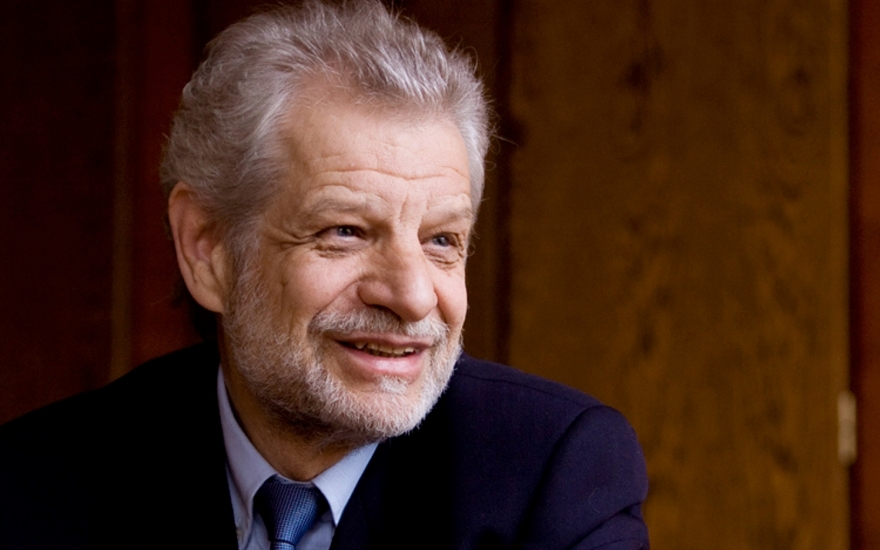
Enjoy this open access reading list of NRFTS articles by Dr. Elsaesser
“James Cameron’s Avatar: Access for All“
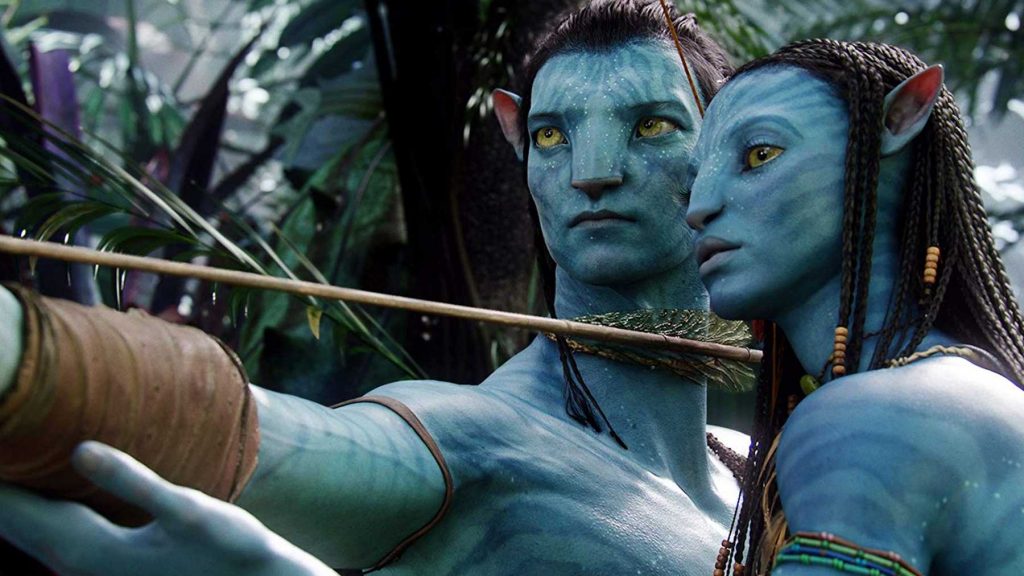
Abstract: In this extract from his [then-]forthcoming book The Persistence of Hollywood (Routledge, 2012), Thomas Elsaesser examines James Cameron’s film Avatar in terms of its auto-representation and personalized narrative, affective engagement with diverse publics and ambition to effect through technology a change of paradigm.

Abstract: In a previous paper, the author argued that the terms ‘multimedia convergence’ and ‘digital cinema’ are apparent oxymorons in terms of their effects, properties, and logics. In this paper, the author continues his study of the digital by examining two additional oxymorons, ‘virtual reality’ and ‘interactive narrative’. In doing so, he investigates another ‘cultural logic’ of the virtual: the dynamic differences between narrative scenarios and game scenarios. One way to overcome their seemingly contradictory status suggests that these are transitional terms (like ‘wireless’ was for radio), and that in due course, a more encompassing understanding of both their commonality and specifics will emerge. For instance, narrative might come to be seen as only one historically contingent mode of storing, accessing, and retrieving information, while virtual reality would be just one of the many ways humans have developed to simulate situations too dangerous or too costly to ‘test’ in situ.
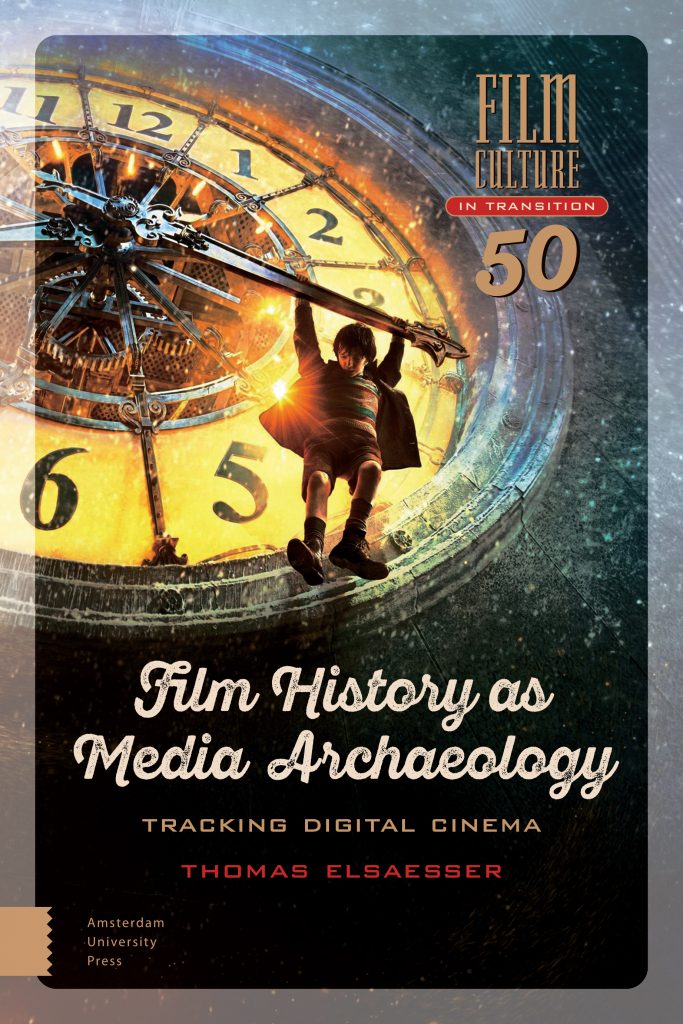
Abstract: This essay constitutes the epilogue to the [then-]forthcoming book Film History as Media Archaeology – Tracing Digital Cinema, Thomas Elsaesser’s collected essays on media archaeology. In this essay, Elsaesser reflects upon the previous 25 years of research into media archaeology, highlighting its methods, terminology and problematic status as a discipline.
“Contingency, causality, complexity: distributed agency in the mind-game film“

Abstract: This essay complements my earlier symptomatic, sociological and economic reading of mind-game films (‘The Mind-Game Film’ 2009) with a reassessment of their status as a privileged (though minoritarian) object of study for contemporary cinema from a philosophical perspective. This essay also updates the analysis given in the 2009 essay, mindful that there have in recent years been a number of popular big-budget films that qualify as mind-game films. Finally, the essay presents twelve key features of mind-game films: (1) multiple universes, (2) multiple temporalities, (3) causality between coincidence and conjunction, (4) feedback: looped and retroactive causalities, (5) mise–en–abymeconstructions, (6) the observer as part of the observed, (7) living with contradictions, (8) imaginary resolutions no longer dissolve real contradictions, (9) antagonistic mutuality under conditions of distributed agency, (10) agency – with the self, against the self, (11) time travel films as black boxes and (12) the mind-game film as pharmakon. Ultimately, mind-game films amplify ontological instability and dismantle both the sovereign subject and its antidote, the divided self of modern subjectivity, in view of accepting more complex but also self-contradictory, more limited but also more extended forms of agency.

